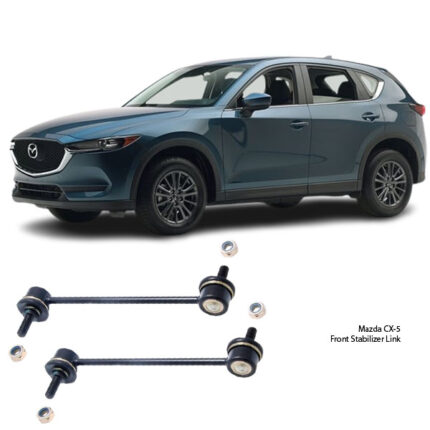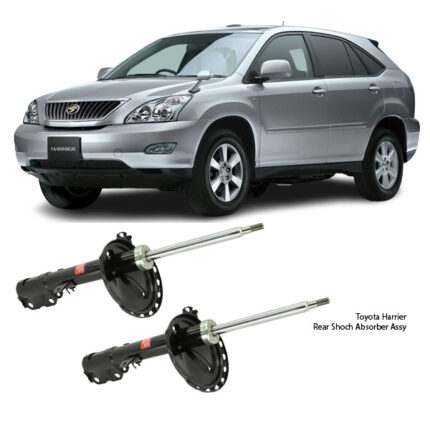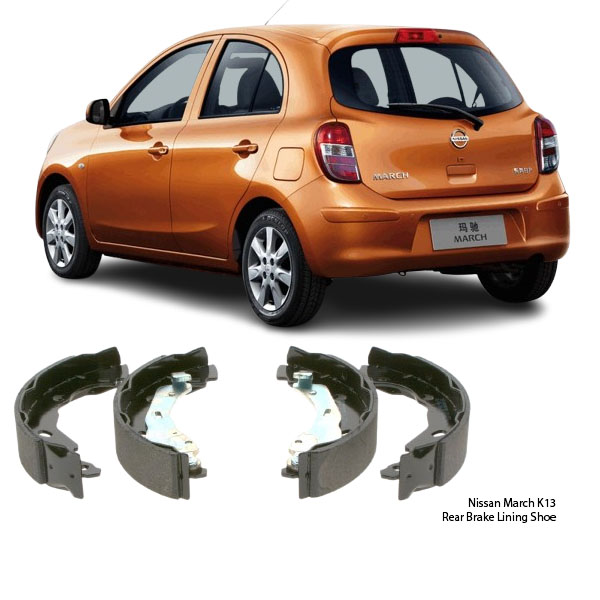Get Nissan March K13 Rear Brake Lining Shoe K1289 in Kenya
When it comes to vehicle safety, few components are as essential as the braking system. At the heart of many rear braking mechanisms, particularly in drum brake setups, lies the Rear Brake Lining Shoe—a vital part responsible for converting motion into controlled stops.
More than just metal and friction material, the rear brake shoe is a carefully engineered component that works under immense pressure and heat to provide reliable, consistent braking. Whether you’re coming to a gentle stop in traffic or making a sudden halt to avoid an obstacle, a properly functioning brake shoe is critical to your vehicle’s safety and stability.
Let’s dive deep into the structure, functionality, benefits, and importance of the Rear Brake Lining Shoe.
What is a Rear Brake Lining Shoe?
A brake shoe is a curved metal piece lined with friction material that presses outward against the inner surface of a brake drum to create friction and stop the wheel. The shoe’s shape resembles a crescent or half-moon and fits inside the circular drum mounted on the wheel hub.
Rear brake shoes are typically found in drum brake systems, especially in the rear axles of many passenger vehicles, vans, SUVs, and even commercial vehicles. When you apply the brakes, hydraulic pressure from the brake fluid pushes the shoes outward against the rotating drum, slowing the wheel through friction.
Key Components
-
Steel Shoe Frame
The base structure of the brake shoe, made from strong stamped or forged steel, provides durability and shape retention under high-pressure operations. -
Friction Lining
This is the replaceable part bonded or riveted to the shoe. It creates the necessary resistance against the brake drum. It’s formulated from heat-resistant compounds that withstand high temperatures without breaking down. -
Rivets or Bonding Adhesives
These fasten the lining to the shoe. Modern shoes may use bonding technology, eliminating rivet holes and increasing lining surface area.
How It Works
When you press the brake pedal:
-
Brake fluid flows from the master cylinder to the wheel cylinder inside the drum.
-
The wheel cylinder pushes the brake shoes outward.
-
The friction linings on the shoes press against the rotating drum.
-
Friction slows the drum’s rotation and, in turn, the wheel.
-
When you release the pedal, return springs pull the shoes back, releasing the drum.
This entire process happens in milliseconds, often thousands of times over the lifespan of the brake shoes.
Features of a High-Quality Rear Brake Lining Shoe
1. Premium Friction Material
Crafted from non-asbestos organic compounds, semi-metallic blends, or ceramic-enhanced formulas for better heat resistance and reduced wear.
2. Precision Engineering
Each shoe is manufactured to meet OE specifications, ensuring a perfect fit and proper alignment within the brake drum.
3. Low Dust & Quiet Operation
Modern linings are engineered to minimize brake dust and eliminate squealing or grinding noises for a smoother and cleaner braking experience.
4. Long Service Life
Durability is key. Rear brake shoes must withstand constant friction, high temperatures, and environmental exposure. Top-grade materials ensure longer service intervals and consistent performance.
5. Reliable Stopping Power
The brake lining maintains friction characteristics over a wide temperature range, ensuring shorter stopping distances and safer deceleration, even under load.
When Should You Replace Rear Brake Shoes?
Just like pads on disc brakes, rear shoes wear out over time. Typical symptoms include:
-
Reduced braking performance
-
Grinding or squealing noise from the rear
-
Excessive pedal travel
-
Brake warning light
-
Uneven braking or pulling
-
Visible wear during inspection (lining less than 2–3mm thick)
Depending on usage, rear brake shoes can last 30,000 to 60,000 kilometers, but dusty conditions, hilly terrain, or heavy loads can shorten their life.
Technical Specifications (Example Format – varies by vehicle)
| Attribute | Description |
|---|---|
| Type | Rear Brake Lining Shoe |
| Material | Organic / Semi-metallic / Ceramic |
| Length | Model-specific (e.g., 180mm–230mm) |
| Width | Typically 30–50mm |
| Fitment | Drum brake systems – rear axle |
| Attachment | Bonded / Riveted friction lining |
| Temperature Tolerance | Up to 500–600°C |
| Noise Level | Low – vibration-dampened materials |
| Durability | High – suitable for heavy-duty use |
Performance & Safety Benefits
Stable Braking in All Conditions
Rain, mud, dust, or snow—rear brake shoes must perform consistently. High-quality shoes resist water fade and recover quickly in wet conditions.
Maintains Rear Wheel Balance
Even though rear brakes handle less braking force than the front, they play a key role in braking stability, especially during emergency stops or when the vehicle is loaded.
Supports Load-Carrying and Towing
Vehicles carrying passengers or cargo depend on rear brakes to stabilize the vehicle under extra weight. Robust rear shoes ensure control even under stress.
Parking Brake Integration
In many vehicles, the rear brake shoes also engage the handbrake or parking brake mechanism. A worn or weak shoe reduces parking brake effectiveness.
Installation & Maintenance Tips
-
Always replace shoes in pairs (both sides of the axle) for even braking.
-
Clean the drum and remove dust before installing new shoes.
-
Check return springs, adjusters, and wheel cylinders for wear or leaks.
-
After installation, adjust the shoe position (if needed) and bed in the new linings by performing gradual stops to allow proper seating.
-
Consider replacing or resurfacing the brake drum if it’s scored, rusted, or out of round.
Professional installation is recommended if you’re unfamiliar with drum brake mechanisms, as they involve spring-loaded components and precise adjustment.
Follow us on Facebook for more parts.




